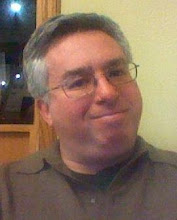Wednesday, April 18, 2012
SLIS 5630: UCLA Science Library -- User Services.
Yesterday, although I wrote about the user-oriented double tiered reference service in my local library, I concluded feeling somewhat wary that I had not touched upon any elements involving STEM or scientific information. The truth is, Santa Monica Public Library is a public lending library and their attempts to service the scientific or technological community are limited to what you might find in any generic library in the Dewey 500s section.
I wanted to actually explore some of the user services available specifically in a STEM library, and to do this, I decided to log onto the nearest library that specifically services students engaged in the scientific fields. The library that came immediately to mind, of course, was the one servicing UCLA’s STEM student and faculty community. This library’s web presence is clearly less than five years old, making it a good candidate for analysis.
The UCLA Science and Engineering library may be found at http://guides.library.ucla.edu/content.php?pid=57686. The home page offers a number of user-friendly informational details, such as a link to an FAQ page containing links to a number of user-centered basic topics, including how to find the library, procedures for renewing books online, and the usual library advisory offerings about copyright, plagiarism, and patents.
However, of more germane interest to the provenance of this class in reference services for science and technology, are the subject specific sections. Scrolling downwards, I found a list of “subjects supported,” which described the long list of scientific areas available for students. I clicked on “chemistry and biochemistry”, which took me to a page specifically devoted to the fields. On the left side of the page may be found a column entitled “research guides,” and these appeared to be keyed to individual classes – there’s one for the specific introduction to chemistry course, for example. Clicking the links to the individual classes takes one to pages listing individual science class reading lists, along with a modified powerpoint display on how to find scientific information, created by the class’s embedded librarian. Links along the top of the page send users to lists of the scientific scholarly professional organizations. Another link takes readers to a launch platform that allows the user to select e-journals, which, presumably, will be full text.
To put the library within the context of this class’s assignment, to describe how the layout works for the user base, I would note that the site appears to be designed very carefully for ease of access. In many respects, I think this site is much more intuitive and cunningly designed than, say, UNT’s science sites, which require you to know how to manipulate the library’s home page before finding the science information.
It is clear from the synthesis of library content to class work that the site has been designed with a great deal of cooperation with the professors teaching the material. And I really liked the way that each page has a window allowing the user to contact embedded librarian “Courtney”.
That said, I am not entirely sure how useful the site would be for faculty – not undergraduates, but the Professors who might use the library for their own research. It seems likely that when the needs are more elevated and higher in requirement, the professors probably utilize other resources. Nevertheless, with its attention to detail, I would consider this a great site to study if one wanted to learn how to create an excellent science library site.
Subscribe to:
Post Comments (Atom)


I agree Paul it is a nice tool. It is more useful for students but I can faculty enjoying the website just to see what undegraduates are thinking.
ReplyDeleteWell done, Paul. A nice complement to each other. I wouldn't mind if the Farrah hair came back either - always wanted to try that look! Very true how the public libraries are more driven by patrons, although many universities are public as well. There just isn't always the connection in the academic libraries.
ReplyDeleteA great breakdown on subject guides. I find they are always a trick to provide enough information for an asynchronous transaction and not make the overwhelming or too hard to work with.
I agree that the Science and Engineering Library has a lot of nice features on the home page. The FAQ are quite extensive. One section that I think could have been done better, though, is the Copyright Policy area. It's full of legalistic language and is hard to wade through. It might have been easier if it was organized by audience, with links such as "If you are a faculty member" and "If you are a student" that take the user to targeted information appropriate for their user category. Copyright policy is so confusing that any assistance in finding narrower or specific information would be stress-relieving.
ReplyDeleteI looked at the reference guide pages you talked about, and I think the layout is great - very intuitive and easy to navigate. That seems to be rare, which I find odd, considering that librarians' strengths tend to lie in organization and retrieval of information.
ReplyDeleteI think that it is a great tool. Linking librarians directly with school work is a great way to keep libraries relevant.
ReplyDeleteI know we were supposed to focus on the articles related to the assignment, but I found myself wondering to the other articles. I really enjoyed the entry “The future of Tech Services: A Journey In Time and Space” considering I’m a Tech Services Librarian. The issues you addressed are some of the ones we’ve been discussing in meetings, and you were right on the money.
ReplyDeleteThanks! The "future of tech services" article was, of course, the term paper for the "Technical Services" class that is available in the Maymester (starting in two weeks if you have no other plans). I invented the idea of fish bodied librarians with snake like hands!
ReplyDelete